shop
News
Michelle Grabner's "Gingham" at Rocket Gallery, Art Forum Critic's pick
February 26, 2016

Michelle Grabner, Untitled [cadmium red deep/green], 2015, oil, gesso, burlap, 24 x 48".
For over twenty years, Michelle Grabner has taken the vernacular patterns of domesticity as a departure point for the creation of abstract paintings. For “Gingham,” her latest exhibition, the artist transmogrifies this common, happy-looking, and picnic-ready fabric into thickly painted works on rough burlap.
From a distance, Untitled [cadmium red deep/green], 2015, looks like a crisscross of red stripes on a white ground. Up close, it reveals itself actually to be made up of pink, red, and white squares over a green ground, the red and pink squares butting against each other in synchronous harmony. The green ground seeping out from beneath each square creates moments of chromatic vibration, loosening the representation of “gingham” into an odd geometric abstraction, a relative of psychedelic Op.
In the project space, Grabner has partially reconstructed her first show at the gallery, “Home Painting,” from 1998. In this installation, seven enamel-on-panel paintings are hung alongside a monitor playing an episode of Martha Stewart’s 1990s television show. “Home Painting” is a marvelous opportunity to see the artist’s graphic, painterly evolution. Her “Gingham” works are fat, voluptuous—rather in stark contrast to the lighter and more fluid stenciling of the older paintings. Grabner’s current pieces, as is made clear through the parallel shows, have become slower to the gaze, transcending the prosaic Martha Stewart domesticity of her inspiration.
— Sherman Sam
RIP David Bowie
January 11, 2016
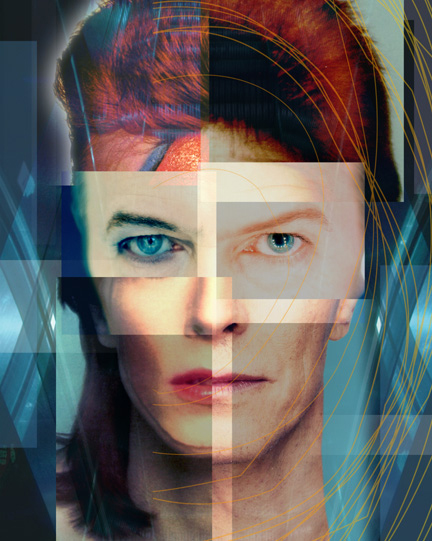
A man with a tremendous impact. He will be missed.
Design by Rex Ray
Robert Hardgrave in New American Paintings, Issue 121
January 05, 2016
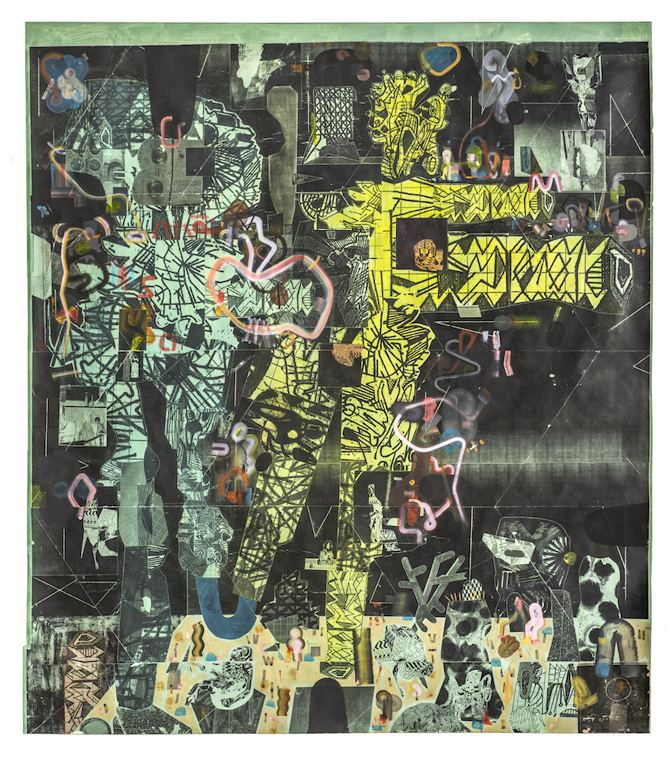
Congratulations to Robert Hardgrave for making the current issue of New American Paintings! We are looking forward to our first exhibition with the artist later this year. Keep an eye out!
Tucker Nichols on Design Matters with Debbie Millman
December 29, 2015
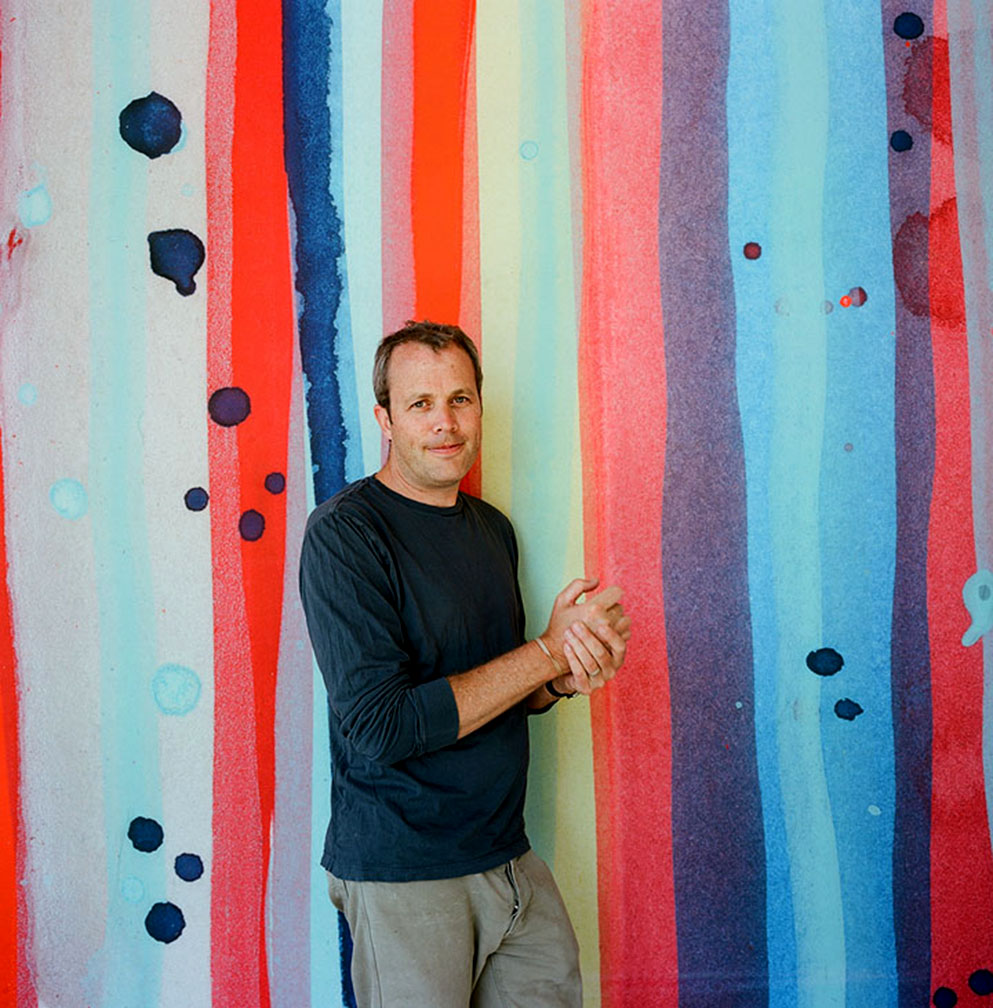
We're pleased to share an excellent audio interview between Debbie Millman and Tucker Nichols, posted December 28 on Design Observer.
Listen to the full interview here!
http://www.debbiemillman.com/designmatters/tucker-nichols/
excerpt:
TN: "I don't care as much about what it's all for. I think I care less and less all the time - particularly in my studio when I'm painting or drawing - I think as time goes on I grant myself more and more permission to just let the thing become whatever it's become and then to be extremely rigid in my judging of that thing the next day. And if I don't like it, to kill it. And if I like it, to keep it, defend it protect it, whatever it needs. But at the time of making it I'm not really thinking. I'm thinking as little as possible. Or I'm trying to compress the amount of time that I spend when I'm making it into as tight as space as I possibly can. And sometimes that works out really well and sometimes it doesn't, but it can't afford attachment. That process gets poisoned by liking something as I'm making it. So, that just means theres a whole different wave that comes after thats about evaluating. And that process needs to be really close."
Thomas Heinser featured on LensCulture
December 28, 2015
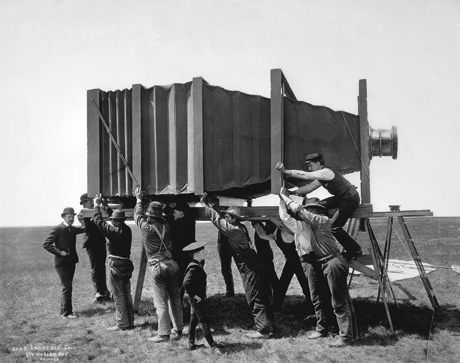
December 2015
Überblick // Overview
Across aerial, studio and location photography, Thomas Heinser employs his distinctive aesthetic and technical expertise—not to mention helicopters, cherry pickers and subtle, natural light—to create a compelling body of landscape photography.
In Überblick, which consists of three ongoing bodies of work, photographer Thomas Heinser surveys the earth from above, finding the graphic intersection of nature and structure, of man and landscape—and recent changes to that landscape. The project, which is translated as "overview" or "view from above," began as an aerial survey of feats of architecture and engineering. As it grew, Heinser began to see the images as a means of decoding the beauty of structures that serve man in crucial ways.
Heinser ended up reaching beyond this exploration to create a series at once aesthetic and, as a subtext, documentary in nature. Their essential stillness and innate sculptural qualities set them apart.
Conduits
Beginning in 2009, Heinser began to investigate the interaction of man-made structures and landscape, specifically, aerial views of bridges, expressways and airport runways. In this series, he asks us to re-imagine these structures as more than arteries of action, depicting them as stand-alone semiological elements. He extends our perceptions of these agents of everyday interactions, contemplating the concept of "bridging" in a broader way.
This body of work includes views of some of the world's most distinctive bridges, airport runways and architectural/functional structures, from Lisbon and Millau to New York and San Francisco.
Heinser picked each bridge for its potential to illustrate a specific point of view, although he emphasizes that his goal was not to describe but to photographically capture how these structures function as graphic subjects. The photos depict both large and small bridges, as well as empty ones, including a new span of the Bay Bridge, which was under construction when photographed. His inspiration to shoot it at this time was that its antithetical emptiness allowed him to see it with fresh eyes (it's just next to his Northern California home after all). Here, we view it as a structure normally activated by presence but now defined by absence, a conduit created by man but temporarily devoid of usage.
Heinser says that he isn't trying to address the concept of scale but in fact is trying to avoid it. "The way I use the aerial perspective," he says "is by cutting out any horizon line, reducing landscape into more of a two-dimensional image. I try to avoid representing the dimensional aspect of landscape, and of scale altogether."
Changing Landscapes
In documenting a terrain transformed by fire and drought damage, Heinser's original interest was in reworking photographic language to describe the landscape. His concern about environmental change led him to document these changes in ways that bridge the binary of aerial distance and the poignant, on the ground realities that face humans and their contemporary lands. Some of these images, including one of bare pines and their shadows in the ashen landscape, are from Lake County, where in the fall of 2015 fires cost people their lives, homes and tens of thousands of acres.
All over the state, drought is reshaping California's natural and agricultural landscape and restricting its water usage. Heinser's engagement with these changes is a way of challenging photography's borders.
From far above, houseboats floating on a lake look like abandoned refrigerators: the lake's water level is now so low that the dock no longer leads to the shore. Groves of almond trees wither because their grower can't afford to water them anymore. The ghostly, shadowy image of an old train bridge refers to its recent emergence after years of aquatic immersion. A curvy anthropometric patch of land is rendered as purely sculptural figure and form, its shape, rimmed by concentric rings, a record of earlier water levels.
Heinser's response to these environments is to expand their meaning, to render them simultaneously as evidence of environmental impact but also to resist the limitations of geographical categories. "The mystery about the objects in the images, their not being 'readable' is what is important," he says. "Looking at houseboats—you're not necessarily recognizing them, until you closely look at the image. I'm interested in creating these kinds of patterns."
"The difference between the conduits and this landscape work," he adds, "is that with the landscapes I am reacting to a more organic shape—almost like body shapes. They summon an internal, connected-to-the-earth response."
Salt Ponds
The Bay Area is home to some 8,000 acres of salt evaporation ponds, and site of one of only two sea salt works in the country. The clay soils and Mediterranean climate here traditionally provide ideal salt making conditions. Environmental changes disrupting the moderate rainfall characterizing this climate have also affected the ponds.
The shallow man-made ponds that extract salt from seawater deposits and naturally evaporate it are also protected wildlife refuge areas and an important component of the ecosystem. Algae and other microorganisms regulate water quality as well as anchor the local ecosystem and local marshes supporting more than a million shorebirds, waterfowl and other wildlife, including over 70 species of birds and several endangered species.
These evaporation ponds are something we only occasionally glimpse when approaching SFO, San Francisco international airport, marvelling at their vibrant colors—magenta, green, blue, yellow and pink—resulting from microorganisms at varying salinity levels.
But Heinser has gone a step further, transforming these oft-ignored ponds into indecipherable calligraphic carpets in bright hues. His quintessentially painterly images, drawing from a quotidian daily feature of the landscape, attain the level of purely aesthetic abstractions. By isolating landscape elements from such a distance, Heinser's seemingly close-up captures paradoxically create the look of a painting's blown-up detail. What seems like thickly layered, paint-cracked impasto, is in fact photographed from hundreds of feet up in the air. Heinser says, "the content is almost secondary to photography turning it into something else," adding that he is "looking for a place of resolution" within these landscapes, one that has "a composition and order to it."
—Doreen Schmid
Holiday schedule // Extension of "Head Into the Trees"
December 18, 2015
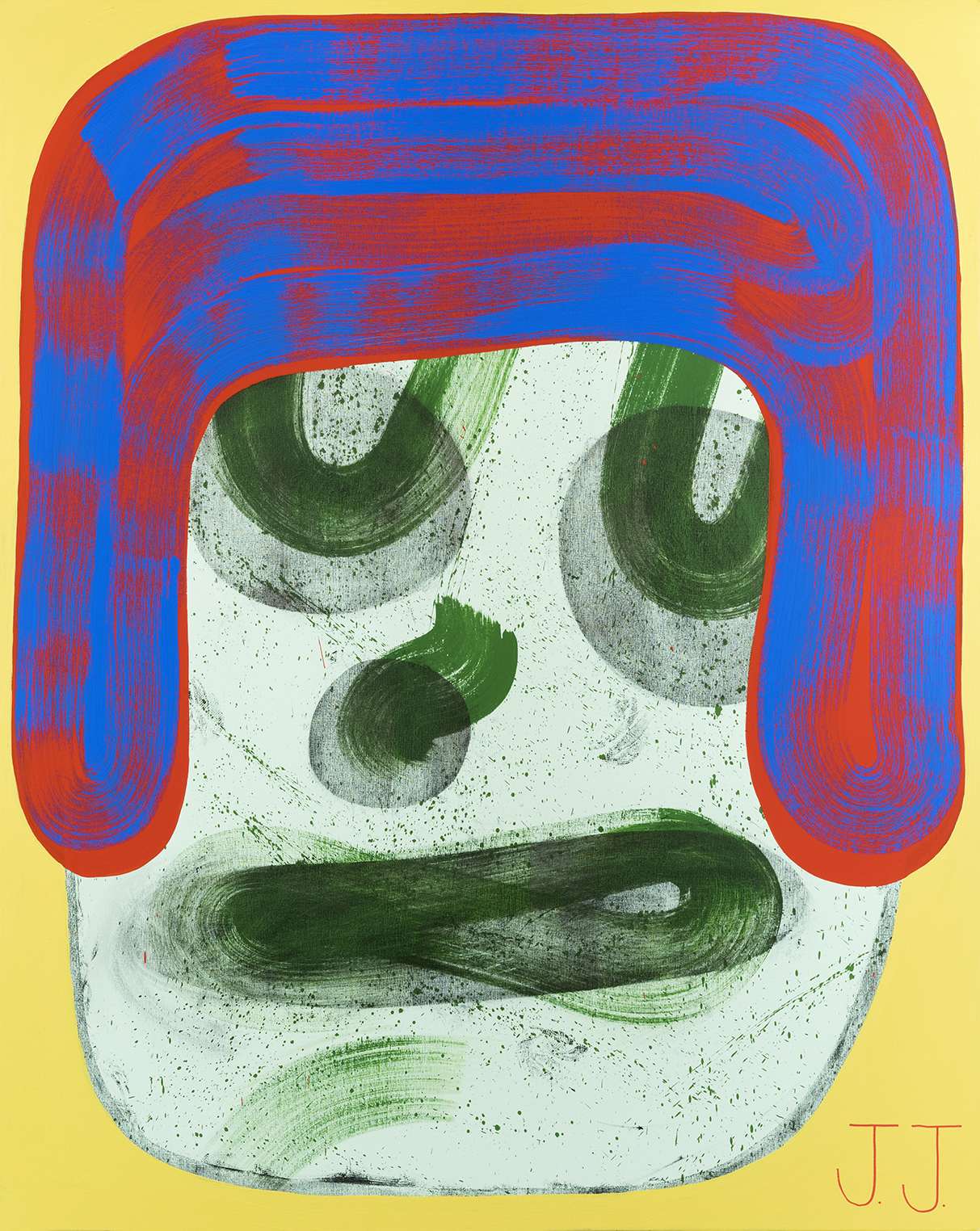
We are pleased to share that we will be extending Josh Jefferson's "Head Into the Trees" exhibition through January 29, 2016.
If you have yet to see this fantastic solo show, please visit us in the New Year!
The gallery will be closed December 19 - January 3rd.
Have a wonderful holiday and happy new year!
Gallery 16
Josh Jefferson "Head Into The Trees" // November 13, 6-9 PM
November 03, 2015
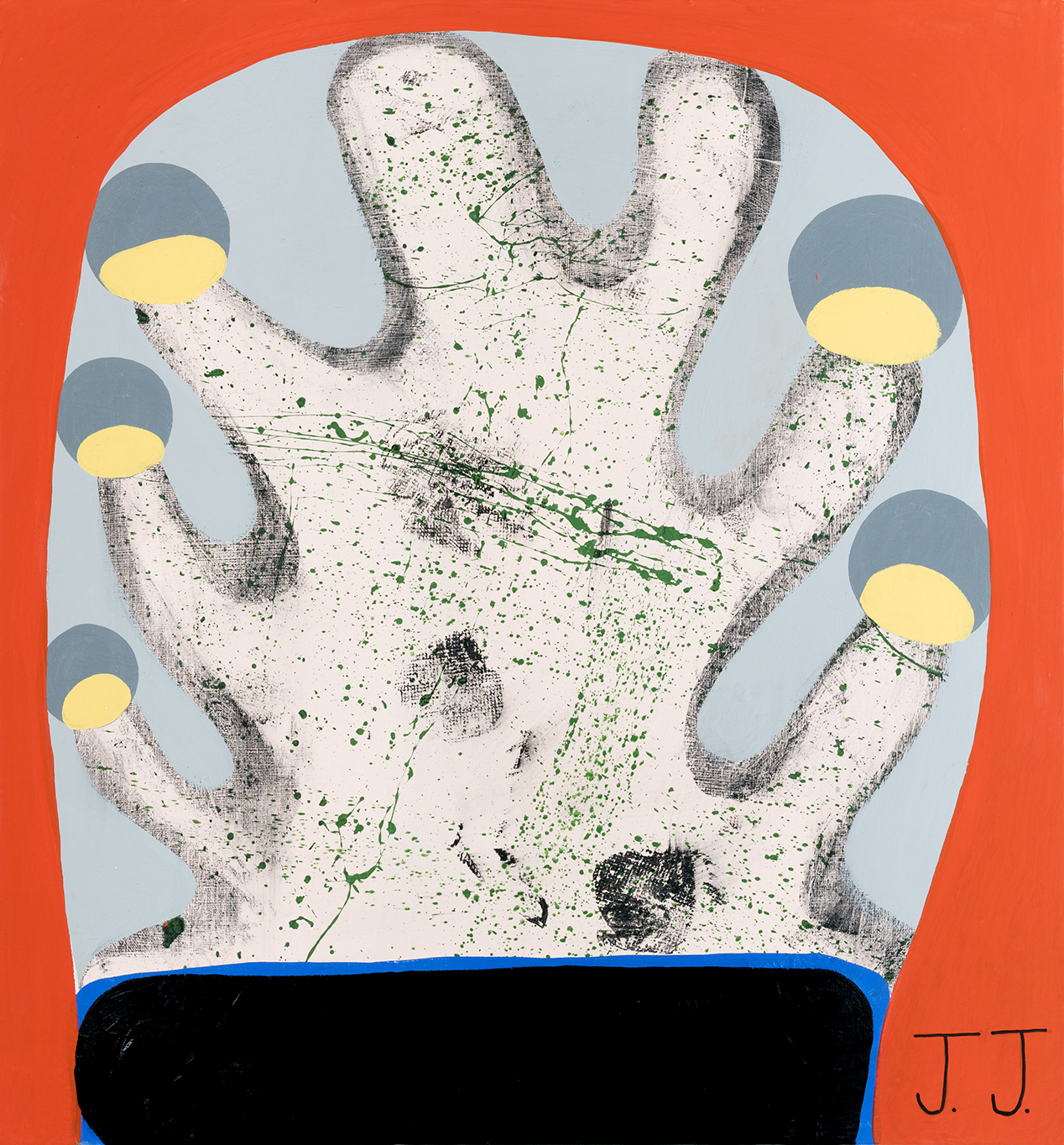
Gallery 16 is thrilled to announce our first exhibition with Boston-based artist Josh Jefferson.
Jefferson’s painting and works on paper balance on a line between figureation and abstraction. His work is a celebration of abandon and control. It retains a palpable sense of the joy in it’s making and the struggling to maintain order. Jefferson’s choice of materials often reinforce the sense of playfulness in his work. The artist uses crayons, colored pencils and common acrylic paint, often upon the pages of art history books. It is not uncommon to turn over a Jefferson drawing to find the image of a famous work by Mondigliani or Titian.
2015 has been an exciting year for the artist. He has mounted shows in New York and Los Angeles as well as a number of feature articles including Forbes Magazine. His work has become an internet sensation with tens of thousands of Instagram followers, proving that new ways to discover the arts are constantly evolving.
In a interview with Beautiful/Decay, Jefferson described his style and motivations: “What really gets me excited is when I see a painting that seems effortless — when an artist has confidence and it appears that the painting came about like one fast whiplash moment. If I could convey that feeling of loose abandon and control I would be happy. The distortions and geometric interpretations in my drawings and paintings act as structures for me to build on and react to. I kind of need to repeat things to find their meaning, and the structures help with this process.”
Jefferson’s work combines material experimentation and visual simplicity. He frequently uses a collage process of cutting and combining previously painted works into a harmonious whole. Jefferson seems less concerned with the results of his labor, than he does with the enchantment of the studio alchemy. He makes objective and non objective work with equal regard. In order for this equilibrium to exist, curiosity must be the guiding voice. His improvisational style may be formed by his devotion to experimental jazz. Like his playing, his visual art is an accumulation of chance moments and intense focus.
gallery 16 / 501 Third st / san francisco, ca / 415 626 7495 / gallery16.com
Closed for Indigenous Peoples Day, October 12
October 11, 2015
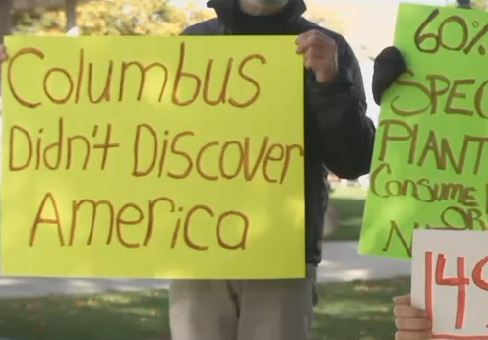
Gallery 16 & Urban Digital Color will be closed Monday, October 12 in honor and celebration of Indigenous Peoples Day. We hope you'll be celebrating too!
Inez Storer in conversation with Bill Berkson // September 17, 2015
September 09, 2015

BILL BERKSON and INEZ STORER // IN CONVERSATION
& BOOK RELEASE PARTY
SEPTEMBER 17, 6-8 PM @ GALLERY 16
501 3rd St. (x Bryant) / San Francisco, CA 94107
Don’t miss this chance to hear legendary poet Bill Berkson and painter Inez Storer discuss their intersecting lives in the arts. The talk will take place on September 17th6-8pm and coincides with the release of Inez Storer’s new book Inez Storer: Allow Nothing To Worry You, a monograph of the artist’s career, produced by Gallery 16. The book features writing about the artist's work by authors & artists Bill Berkson, Timothy Anglin Burgard, Bonnie Gangelhoff, Barbara Morris and Maria Porges.
The book release comes in conjunction with the artist's solo exhibition Inez Storer: Memories from the Backlot which opens October 6 at Seager Gray Gallery in Mill Valley, CA.
Renowned poet Bill Berkson is the author of some twenty books including a 2008 collaboration BILL with drawings by Colter Jacobsen, published by Gallery 16 Editions. His collection Portrait and Dream: New & Selected Poems won the Balcones Prize for Best Poetry Book of 2010 and was honored by the San Francisco Bay Guardian with the 2008 GOLDIE Award in Literature. He has collaborated with many artists and writers, including friends Alex Katz, Philip Guston, and Frank O’Hara and his criticism has appeared in ArtNews, Art in America, and elsewhere. Formerly a professor of liberal arts at the San Francisco Art Institute, he was born in New York in 1939, and now divides his time between San Francisco and Manhattan.
Inez Storer’s work has been exhibited in solo exhibitions consistently thorough the United States since 1971. Her work has been presented at institutions such as the San Jose Museum of Art, the Monterey Museum of Art, the Fresno Art Museum, Yerba Buena Center for the Arts, The National Museum of Jewish History, Philadelphia. Storer taught at the San Francisco Art Institute (1981- 1999), Sonoma State University (1976 - 1988), San Francisco State University (1970 - 1973), and the College of Marin (1968 - 1979). She has received numerous grants and awards, including a Pollock-Krasner Foundation grant in 1999, and has worked twice as a visiting artist at the American Academy in Rome (1997, 1996). Her work is included in the permanent collections of the Fine Arts Museums of San Francisco, the Oakland Museum of California, the Lannan Museum in Fort Worth, Texas, the San Jose Museum of Art, and the de Saisset Museum at Santa Clara University.
Inez Storer is represented by Seager Gray Gallery in Mill Valley, CA, and Gail Severn Gallery in Ketchum, ID.
Charles Linder & Graham Gillmore // September 11 - November 7
September 07, 2015
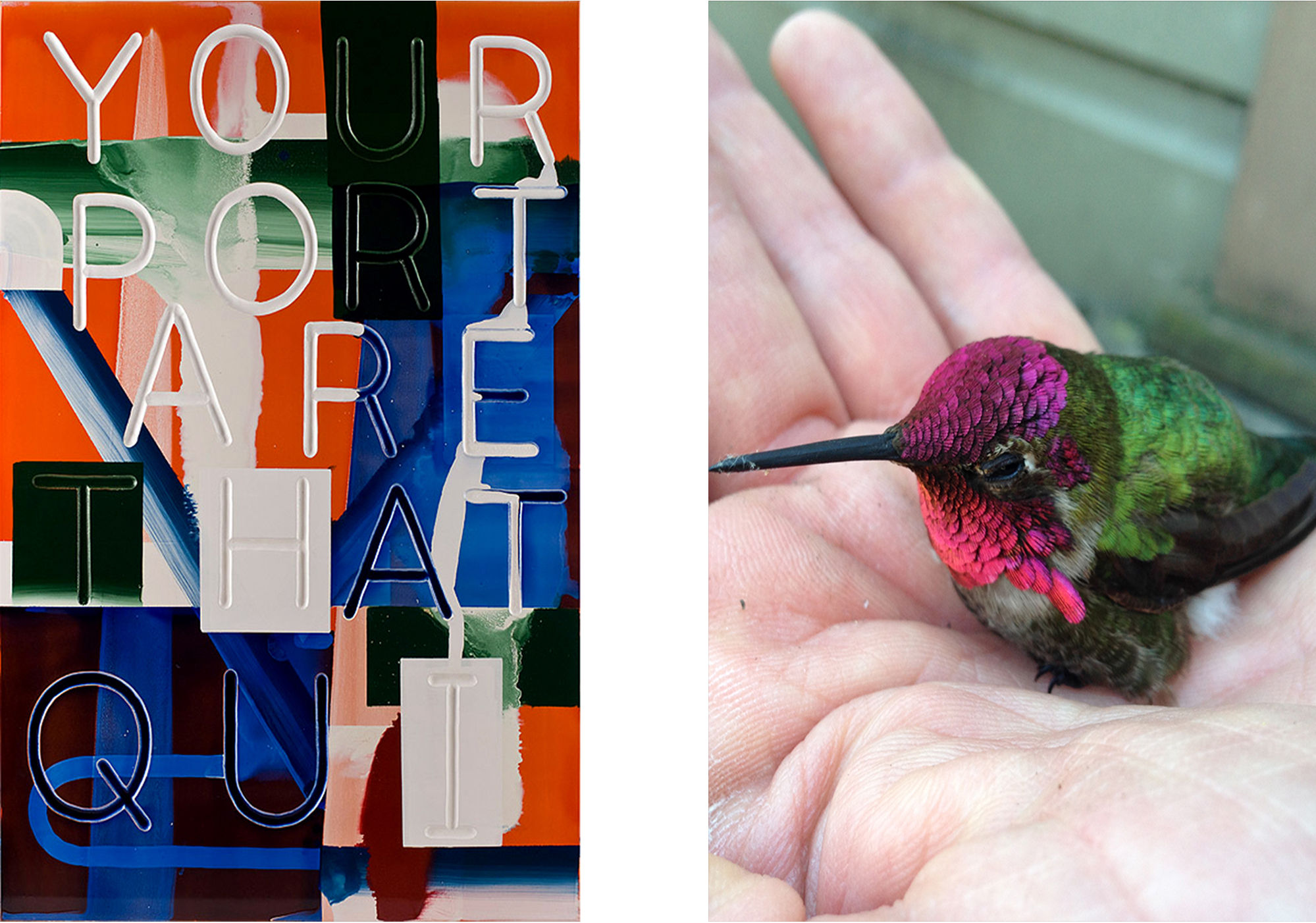
Please join us for the first exhibition of our Fall Season.
Two simultaneous solo shows by Graham Gillmore and Charles Linder!
Graham Gillmore //
Your Proportions Are Not That Exquisite
Charles Linder //
Invisible Fencing Luminaries
On View: September 11-November 7, 2015
Opening Party: Friday September 11, 6-9pm
Live music by Virgil Shaw and the Killer Views
About The Artists:
Graham Gillmore, renown Canadian artist presents “Your Proportions Are Not That Exquisite”. The title is drawn from a text in one of Gillmore’s paintings that seems to puncture the balloon of the current Selfie culture.
He is best known for his extraordinary paintings that use of text as subject. In a 2013 review of Gillmore’s work critic Kenneth Baker wrote “ Words worm their way into contemporary art because they worm their way into consciousness. Yet they seem particularly alien to painting. The work of Vancouver native Graham Gillmore at Gallery 16 exploits the bumptious quality of words, especially in the mind’s ear, to fine comic effect. He baits our readiness to assume that the voice represented in an artist’s work must be his own.
Thomas Breidenbach wrote about Gillmore’s work in ArtForum “Exploring the word as image, and the image as word, Graham Gilmore twists the knife of a smartass remark, the threatening anonymity of a clinical evaluation. Employing puns and punch lines both lewd and mawkish, and referencing clichés, board games, rebuses, barroom banter, and graffiti, his paintings are by subtle turns playful, earnest, and caustic.”
Graham Gillmore’s work is collected by the Museum of Modern Art, the Ghent Museum, Gian Enzo Sperone, the Museum of Contemporary Canadian Art, The Royal Bank of Canada, the Vancouver Art Gallery, and numerous other institutions worldwide.
Charles Linder is well known figure in the Bay Area art scene. He founded the seminal exhibition space Refusalon in the early 1990’s, as well as Lincart. Charles will present his fourth solo exhibition at Gallery 16, Invisible Fencing Luminaries. The show will include new sculptural work and paintings. For his fourth solo exhibition at Gallery 16, the artist presents work that use the metaphor of the fence.
“I’m thinking of my current work as fencing; the paintings are literally fences between my world and the viewers. Throughout my career, I’ve relied on friends and mentors to point out to me what isn’t working. For me, becoming a better artist has meant knowing when and where to move my fences.”
Linder’s art has long been the tangible remnant of his lifestyle. For some, the merger of art and life is an intellectual process, more thought than action. John Cage famously said “Ideas are one thing and what happens is another.” For Charles Linder, the integration of his life and his artwork is unconscious. He is an instigator of experiences. He uses poetry, punning, humor and a witty intelligence to make beautiful objects from cultural detritus.